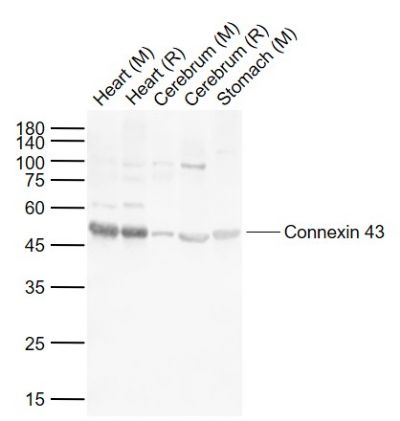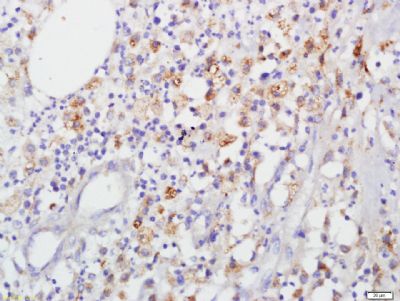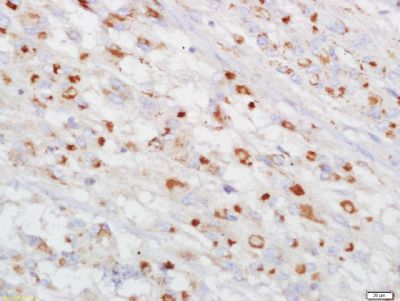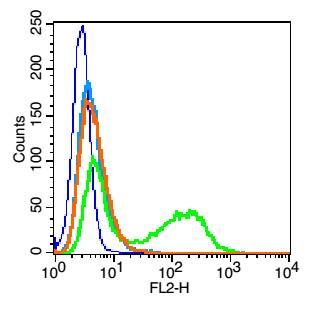Sample:
Lane 1: Mouse Heart tissue lysates
Lane 2: Rat Heart tissue lysates
Lane 3: Mouse Cerebrum tissue lysates
Lane 4: Rat Cerebrum tissue lysates
Lane 5: Mouse Stomach tissue lysates
Primary: Anti-Connexin 43 (SL8987R) at 1/1000 dilution
Secondary: IRDye800CW Goat Anti-Rabbit IgG at 1/20000 dilution
Predicted band size: 43 kD
Observed band size: 48 kD
Tissue/cell: human cervix carcinoma; 4% Paraformaldehyde-fixed and paraffin-embedded;
Antigen retrieval: citrate buffer ( 0.01M, pH 6.0 ), Boiling bathing for 15min; Block endogenous peroxidase by 3% Hydrogen peroxide for 30min; Blocking buffer (normal goat serum,SLC0005) at 37℃ for 20 min;
Incubation: Anti- Connexin 43 Polyclonal Antibody, Unconjugated(SL8987R) 1:500, overnight at 4°C, followed by conjugation to the secondary antibody(SP-0023) and DAB(SLC0010) staining
Tissue/cell: human brain glioma; 4% Paraformaldehyde-fixed and paraffin-embedded;
Antigen retrieval: citrate buffer ( 0.01M, pH 6.0 ), Boiling bathing for 15min; Block endogenous peroxidase by 3% Hydrogen peroxide for 30min; Blocking buffer (normal goat serum,SLC0005) at 37℃ for 20 min;
Incubation: Anti- Connexin 43 Polyclonal Antibody, Unconjugated(SL8987R) 1:500, overnight at 4°C, followed by conjugation to the secondary antibody(SP-0023) and DAB(SLC0010) staining
Blank control(blue): HUVEC cells(fixed with 2% paraformaldehyde (10 min) ).
Primary Antibody:Rabbit Anti-Connexin 43 antibody(SL8987R), Dilution: 1μg in 100 μL 1X PBS containing 0.5% BSA;
Isotype Control Antibody: Rabbit IgG(orange) ,used under the same conditions );
Secondary Antibody: Goat anti-rabbit IgG-PE(white blue), Dilution: 1:200 in 1 X PBS containing 0.5% BSA.
|



